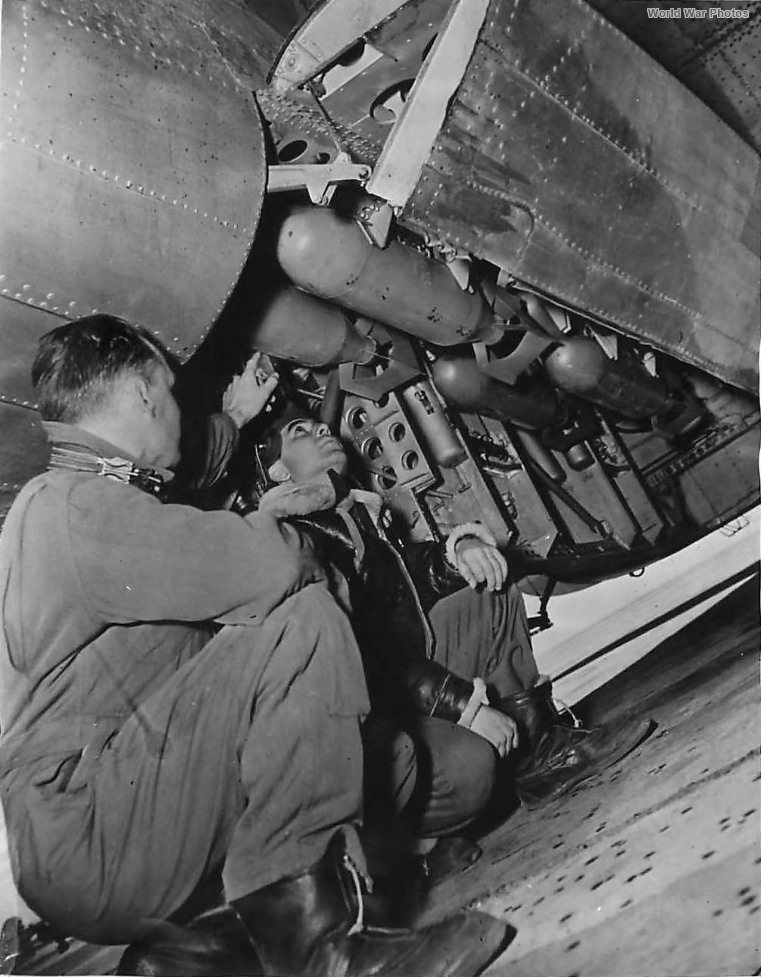The bomb bay doors on the B-18 Bolo were a critical component of its operational design, controlled by a hydraulic system that ensured smooth and reliable operation during bombing missions. When closed, the bomb bay doors formed the lower part of the fuselage, with gum rubber weather strips attached to the main keel to create a tight seal, preventing any gaps that could compromise the aircraft’s aerodynamics or allow water and debris to enter.
Operation of the Bomb Bay Doors:
Opening the Doors:
- To open the bomb bay doors, a four-way hydraulic valve was moved to the “open” position. This action triggered the hydraulic system that controlled the doors.
- A bungee assembly, which was connected to the bomb bay door operating cylinder arms and the doors themselves, provided an initial force to spring the doors open immediately upon activation. This rapid opening was crucial during bombing runs to ensure that the bombs could be released without delay.
- Additionally, a secondary bungee system was integrated into the door operating mechanism. This system served as a backup, ensuring that the doors could still be opened even if the hydraulic system failed.
Closing the Doors:
- To close the doors, the four-way valve was moved to the “closed” position. Once in this position, the valve was left there at all times except when the doors were being opened.
- The bomb bay doors were held closed by the constant pressure from the hydraulic system. This pressure ensured that the doors remained securely closed during flight.
- A mechanical latch was also part of the operating mechanism, designed to keep the doors securely closed when the aircraft was on the ground, especially if hydraulic pressure dropped after engine shutdown.
Safety Features:
- Electrical and Mechanical Safety Locks:
- To prevent accidental bomb release, the bomb bay door operating mechanism included an electrical and mechanical safety locking device.
- This safety lock ensured that bombs could not be released until the bomb bay doors were fully open, preventing any damage to the aircraft or premature detonation of the payload.
